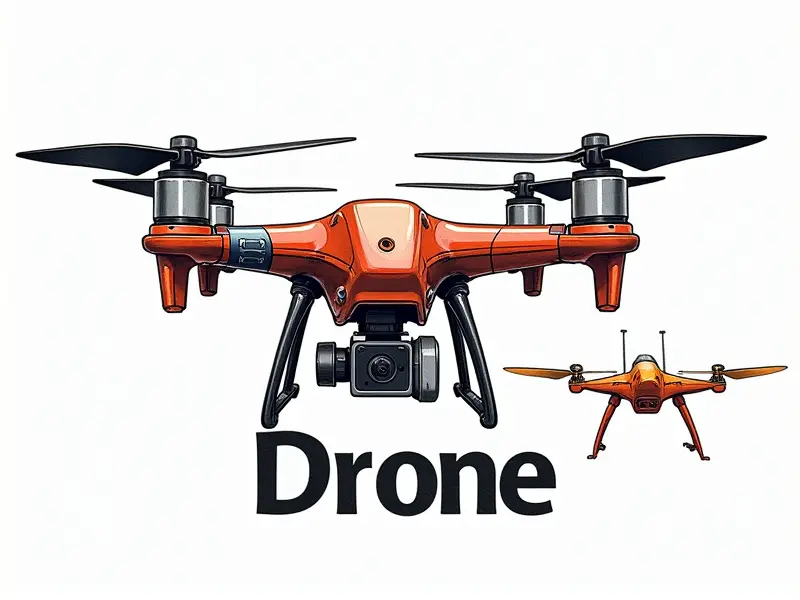Can I fly DJI in rain?

Is It Safe to Fly DJI in Drizzle?
Flying a DJI drone in drizzle can be tempting, especially when the skies are overcast and you're eager to capture stunning aerial footage. However, it's crucial to understand that even light rain poses risks to your equipment. Moisture can seep into sensitive electronic components, potentially causing malfunctions or permanent damage.
Before taking off in drizzle, assess the conditions carefully. If the weather forecast predicts intermittent showers but no heavy rainfall, you might be inclined to proceed with caution. However, it's generally safer to err on the side of caution and wait for drier skies.
Can You Operate DJI in the Rain?
The question of whether a DJI drone can operate in rain is multifaceted. While some models are designed with water resistance features, they're not fully waterproof. Operating your drone in heavy rainfall increases the risk of water damage to internal components.
Before venturing out into rainy conditions, check your drone's specifications and user manual for information on its weather resistance capabilities. Some DJI drones may have IP ratings that indicate their level of protection against moisture.
DJI Drone Weather Resistance Explained
DJI incorporates various measures to protect its drones from the elements. For instance, some models feature water-resistant coatings and seals around critical components like motors and cameras. However, these features are designed primarily for light drizzle or splashes of water, not heavy rainfall.
Understanding your drone's weather resistance is crucial before flying in wet conditions. Always refer to DJI's official documentation or contact customer support if you're unsure about the specifics of your model.
Flying Your DJI in a Light Shower
A light shower might seem like an ideal opportunity for capturing unique aerial footage, but it's important to weigh the risks. Even a brief encounter with rain can compromise the integrity of your drone’s electronics.
Consider the following factors before flying:
- Rain Intensity: Is it just a light drizzle or is there heavier rainfall?
- Durability: Does your model have water-resistant features?
- Conditions: Are you flying in an open area where rain can easily reach the drone?
Tips for Using DJI in Wet Conditions
If you decide to fly your DJI drone in wet conditions, follow these tips to minimize risks:
- Pre-flight Checks: Inspect all components for any signs of moisture or damage.
- Dry Off: Wipe down the drone and its accessories before flying to remove any residual moisture.
- Battery Management: Keep extra batteries dry and ready. Moisture can affect battery performance.
- Cover Up: Use waterproof covers or bags if available, but be cautious not to obstruct sensors or propellers.
Should You Avoid Flying DJI in Rain?
In most cases, it's advisable to avoid flying your DJI drone in rain. The risks of water damage outweigh the potential benefits of capturing footage under wet conditions. If you're unsure about the weather or your drone’s capabilities, it's best to wait for clearer skies.
DJI Drone Performance in Light Rainfall
Even with light rainfall, DJI drones may experience performance issues due to moisture affecting sensors and electronic components. While some models can handle brief exposure to light rain, continuous or heavy showers will likely cause malfunctions.
Monitor your drone's behavior closely during light rainfall flights. Any signs of malfunction should prompt an immediate landing to prevent further damage.
Can My DJI Handle A Quick Rain?
A quick shower might seem like a minor inconvenience, but it can still pose significant risks to your DJI drone. Even brief exposure to rain can cause moisture to accumulate in sensitive areas, leading to potential malfunctions or permanent damage.
If you find yourself caught in unexpected rain while flying, land the drone as soon as possible and assess its condition before attempting another flight.
Flying DJI Mavic Pro in Light Rain
The DJI Mavic Pro is one of the brand’s popular models known for its portability and functionality. However, it's important to note that even this model isn't fully waterproof. While it has some water-resistant features, flying in light rain can still pose risks.
Before taking off in light rain with your Mavic Pro, ensure you understand the limitations of its weather resistance capabilities. Keep an eye on moisture levels and be prepared to land quickly if conditions worsen.
How Does Rain Affect DJI Drone Performance?
Rain can significantly impact DJI drone performance in several ways:
- Sensor Malfunctions: Moisture can interfere with camera and sensor functions, leading to blurry images or malfunctioning sensors.
- Battery Issues: Water exposure can reduce battery efficiency and shorten flight times.
- Motor Problems: Wet motors may cause erratic behavior or complete failure during flights.
Can I Fly My DJI Helicopter in the Rain?
Flying a DJI helicopter drone in rain presents similar risks to other models. While some helicopters might have enhanced water resistance features, they're still not designed for prolonged exposure to wet conditions.
If you decide to fly your DJI helicopter in light rain, take all necessary precautions and be prepared to land immediately if the weather worsens.
Conclusion
Flying a DJI drone in rain is generally discouraged due to the significant risks involved. While some models may have water-resistant features, they are not designed for extended exposure to wet conditions. Always prioritize your equipment's safety by adhering to manufacturer guidelines and avoiding flights during heavy rainfall.

